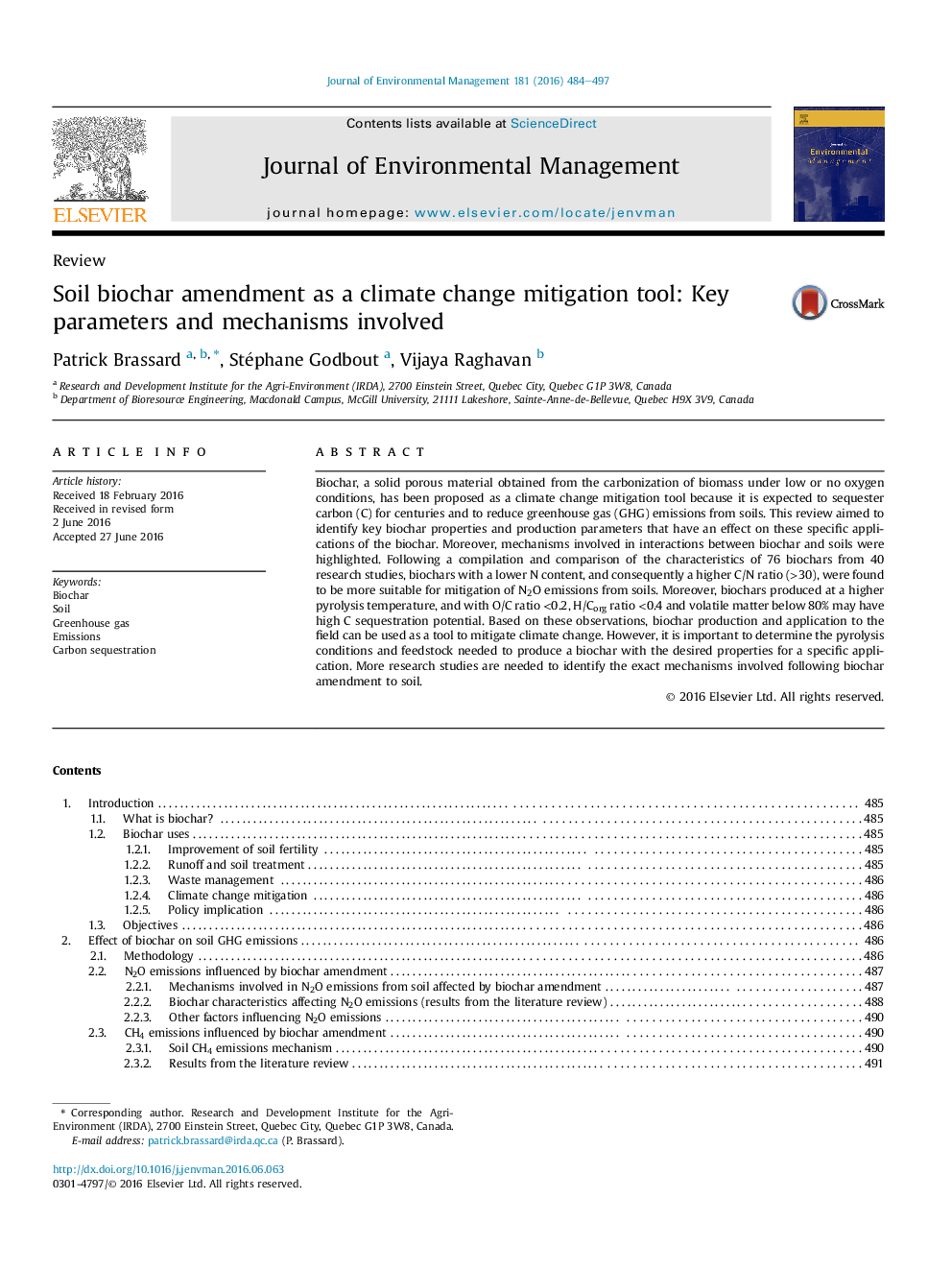| Article ID | Journal | Published Year | Pages | File Type |
|---|---|---|---|---|
| 7479737 | Journal of Environmental Management | 2016 | 14 Pages |
Abstract
Biochar, a solid porous material obtained from the carbonization of biomass under low or no oxygen conditions, has been proposed as a climate change mitigation tool because it is expected to sequester carbon (C) for centuries and to reduce greenhouse gas (GHG) emissions from soils. This review aimed to identify key biochar properties and production parameters that have an effect on these specific applications of the biochar. Moreover, mechanisms involved in interactions between biochar and soils were highlighted. Following a compilation and comparison of the characteristics of 76 biochars from 40 research studies, biochars with a lower N content, and consequently a higher C/N ratio (>30), were found to be more suitable for mitigation of N2O emissions from soils. Moreover, biochars produced at a higher pyrolysis temperature, and with O/C ratio <0.2, H/Corg ratio <0.4 and volatile matter below 80% may have high C sequestration potential. Based on these observations, biochar production and application to the field can be used as a tool to mitigate climate change. However, it is important to determine the pyrolysis conditions and feedstock needed to produce a biochar with the desired properties for a specific application. More research studies are needed to identify the exact mechanisms involved following biochar amendment to soil.
Related Topics
Physical Sciences and Engineering
Energy
Renewable Energy, Sustainability and the Environment
Authors
Patrick Brassard, Stéphane Godbout, Vijaya Raghavan,
